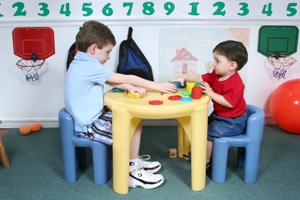 If you’ve been following my Grace and Courtesy series so far, hopefully you’ve realized a few basic things about these important life skills.
If you’ve been following my Grace and Courtesy series so far, hopefully you’ve realized a few basic things about these important life skills.
To sum up:
1. Grace and courtesy skills should be taught very early
2. These skills have both a narrow application (home, classroom) and a broad one (community, world)
3. Grace and courtesy skills are essential to a happy, healthy life
As you can see from the previous post, the skills of grace and courtesy are extensive and there is much overlap. A child who reaches elementary without having mastered the preschool skills will need to learn those before moving on, and throughout each level, children need reminding, repetition, and much practice to keep their skills fresh. It’s easy for them to forget what they’ve learned if they don’t use their skills, so look for ways that they can apply them frequently in every day life.
Most people would agree that good etiquette is in short supply today. People have forgotten the social niceties that used to be a natural part of the community. Parents often allow rude behavior at home (not knowing what else to do), and children carry those practices into schools and neighborhoods. It doesn’t have to be that way, though.
There are lots of books and other resources that can help with grace and courtesy lessons.
Here are some recommendations:
Books:
365 Manners Kids Should Know by Sheryl Eberly
Emily’s Everyday Manners by Peggy Post
Also, there’s a series of 4 books by Munro Leaf that were written in the 1930’s and ‘40s that are still fun today. They’re a little outdated, but the illustrations are charming and the message of courtesy comes through loud and clear (see the first 4 books at this link).
Sometimes it feels like an uphill battle, but if we are consistent with the lessons of grace and courtesy, it will pay off in the end as the children in our lives grow into kind, polite, thoughtful adults.

